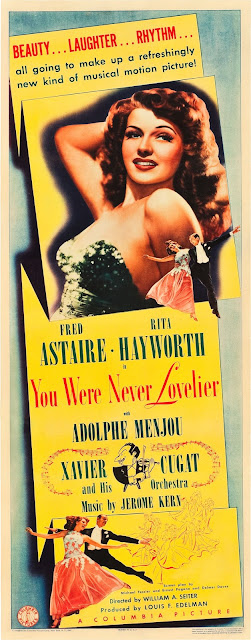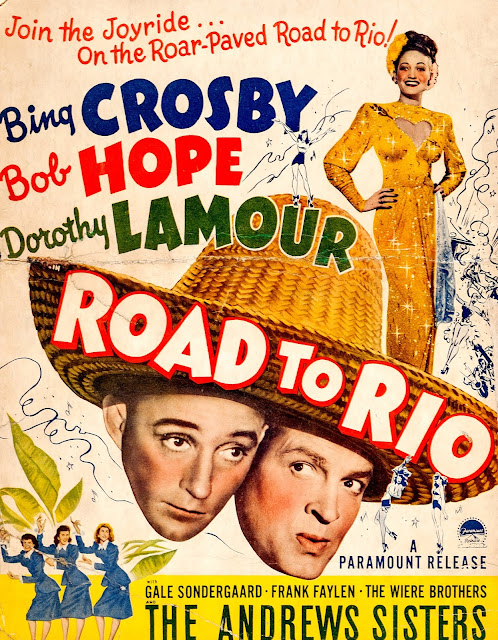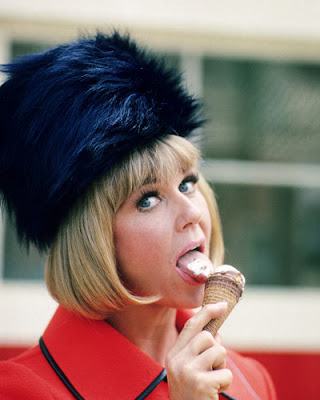Austerlitz and McMath.
Frederick Austerlitz and Virginia McMath were just two young
kids at first, both setting their sights on fame in vaudeville, Broadway, and
finally Hollywood. But not together, of course. No, Fred started an act with
his sister, Adele, who was considered the star of the two. Together they
studied dancing and singing until they were ready to debut their act—after a
small name change of “Austerlitz” to “Astaire.”
Shortly after that, their
father got them a major contract with the famous Orpheum Circuit. Adele and
Fred continued polishing and creating their act, slowly moving up the ranks.
Fred even developed a friendship with George Gershwin, one which would serve
both of their future careers. In the 1920s, the Astaires were on Broadway, and
Fred was gaining notice as “the greatest tap-dancer in the world,” as quoted by
Robert Benchley in 1930. 1932 brought the break-up of the team. Adele was going
to get married, but Fred knew he had to keep going, especially while his star
was still hot. And so, to Broadway and a show called “The Gay Divorce” he went…
Virginia, nicknamed “Ginger” as a kid and adopting her
stepfather’s name “Rogers,” had a slightly different path. After winning a
Charleston dance contest, she toured the theater circuits until she debuted on
Broadway in 1929. She was quickly put into the Gershwins’ “Girl Crazy” and got
to introduce the now-standard “Embraceable You” and "But Not for Me."
Paramount Pictures signed her
as soon as they could. After only a few films, Ginger got out of her Paramount
contract and went to work for other studios. 1933 was Ginger’s breakthrough
year—she was cast as “Anytime Annie” in 42nd
STREET, which led to a series of roles at Fox, Universal, Warner Bros.
(where she made GOLD DIGGERS OF 1933),
and RKO Radio Pictures. Little did she know what RKO had in store for her…
Fred, meanwhile, was a huge hit in “The Gay Divorce,” not
only introducing “Night and Day” for the first time, but also showing audiences
he could do just fine without his sister. Hollywood wanted him, and David O.
Selznick signed him to RKO, which then lent him to MGM to play himself in the
Joan Crawford-Clark Gable vehicle DANCING
LADY. Back at RKO, the studio assigned him to FLYING DOWN TO RIO.
FLYING was
typical fare in the 1930s. It was a musical with gorgeous women, a big love
story, an exotic location, and outrageous ensemble dance numbers. But instead
of fading in with the other musicals of its kind, FLYING sticks out for one, or rather two, reasons: Fred and Ginger.
The two had met before, even dated a few times. Fred also had helped with
choreography for “Girl Crazy.” But when they were on screen together, something
ignited. They had unbelievable chemistry, and it didn’t hurt that they both had
loads of charm. Their verbal banter was great, Fred matching Ginger’s sassiness
with a cool wit. And then came the dance “The Carioca.” One word: fireworks.
They stole the whole picture. Audiences everywhere saw it. Soon, RKO saw it,
too. Astaire and Rogers must be put in another film together.
These films are unique in the way that they’re all well-made
films. Some movie partnerships have certifiable duds, but I don’t think that’s
the case with Fred and Ginger. The plots may be flimsy from time to time, but
you don’t care. The sets are always fabulous. The music is simply incredible,
usually written just for the film and becoming standards in their own right.
The supporting characters are amusing and take up the right amount of screen
time. The direction is never super fancy because the directors knew what the
main attraction was. The verbal sparring between the two stars is always
delightful, and, of course, the dancing is nothing short of superb.
It’s important to note that the Astaire-Rogers teaming did
more than entertain millions—they revolutionized the Hollywood musical. Before
they came along, musicals were all about the Busby Berkeley model: crazy
outfits on beautiful chorus girls with various camera shots and edits, almost
like a Picasso painting. But that wouldn’t fly with Mr. Astaire. He didn’t want
the camera to do anything except look straight at him and follow his movements.
That way, audiences got the whole picture and could see that there were no
breaks or special tricks. His dances would be graceful, elegant, and more
importantly, they’d serve the story. Interrupting the plot for some silly
number would not do. Fred was granted complete control over the dances, so he
made sure his numbers had a purpose. Take “Night and Day” from THE GAY DIVORCEE, for example. Up until
this point, Ginger’s character has been avoiding Fred’s and wants to stay away
from him. He starts singing to her, which seems to amuse her, but she still
tries to walk away. Fred stops her and engages her in a dance of total
seduction. Halfway through the routine you see her surrender to him, and by the
end, you know she won’t be walking away from him again.
With love,
Michaela
Michaela














Comments
Post a Comment